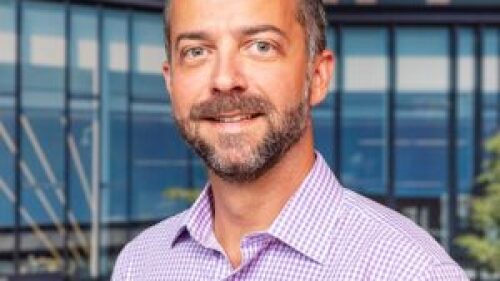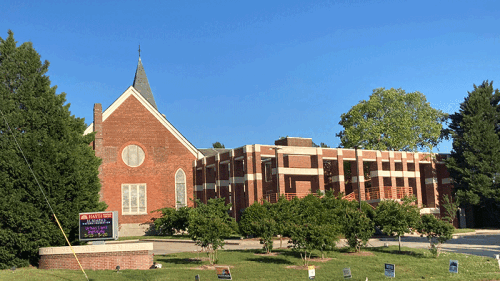Innovations in medicine and trends in health care deliveryare affecting the design and development of health-related facilities,services, and amenities in Arizona, panelists said during the “The Future ofHealthcare and Biotechnology” session at the 2020 ULI Arizona Trends Day.
Among these changes are advances in genome mapping andimmunotherapies that have shifted approaches from reactive to more proactivehealth care strategies and a focus on wellness, preventative care, and a community-basedapproach to medicine. Although large hospitals remain at the forefront ofadvanced treatments, smaller neighborhood health centers are promotinghealthier lifestyles catered to individuals.
Arizona is a leader in the future of health care and biotech,because “innovation is part of the core of what we do here,” said Dr. RafaelFonseca, Getz Family Professor of Cancer, and chair of the Department of Medicineand director of innovation and transformational relationships for the MayoClinic–Arizona. The state has been supportive in the areas of regulation andfostering an environment friendly to business and biotech, he said.
The Mayo Clinic is doubling the size of its North Phoenixcampus. The $730 million project will add 1.4 million square feet (130,000 sqm) of building space to the existing 1.7 million square feet (158,000 sq m),with expanded clinical capacity, support services, and parking. Mayo’sfive-year project expects to open new patient areas this year and be completedby 2023.
“We haven’t seen the Uber effect come to medicine becauseit’s very complex and multidimensional,” Fonseca said. “But we know the time iscoming.”
Institutions such as Mayo whose core mission involvesclinical care will continue to have facility-based needs, but the next wavewill require innovation and multiple tools, he said, with concepts that couldinclude medication delivery via drones. “No one knows the future of capitalassets and infrastructure for health care,” he said. “We need to considerwhether [facilities] have the right setup to accommodate the technology andpathways of the future.”
The ongoing development of the 30-acre (12.1 ha) PhoenixBiomedical Campus in the heart of downtown can help position the region to becomeone of top 50 cities in world for biomedicine, said Douglas Woodruff, westregion executive and senior vice president of Wexford Science + Technology inBaltimore, which develops facilities for universities, academic medical centers,and major research institutions.
In 2019, Wexford broke ground on the campus’s first public/privateproject, the $77 million, 226,000-square-foot (21,000 sq m) Wexford Science + Technologybuilding, with Arizona State University (ASU) anchoring half the space. The cityof Phoenix, ASU, the University of Arizona, and Northern Arizona University aredeveloping the campus for biomedical-related research, academic purposes, andclinical facilities. It includes 1.6 million square feet (149,000 sq m) oflaboratories, classrooms, and lecture halls, with buildout plans for 6 millionsquare feet (557,000 sq m) of space. The campus generates more than $1.3billion in annual economic impact for the state and is expected to generate$3.1 billion per year by 2025.
“We’re at ground zero” in moving bioscience from research tothe commercial market, said Woodruff. “The question is, how do you accelerate?”Arizona needs to “compete on the capital and physical sides and have the talentto support it,” he said. To turn intellectual property into revenues, Phoenix needsspaces to“accelerate the ability of people doing this work. It allcomes down to collaboration.” Another strategy, he said, would be to enhance educationprograms through community college and post-high school programs for theestimated 40 percent of jobs in this sector that do not need a four-yearcollege degree.
Ten new or major expansions to hospitals are taking place inthe Phoenix metropolitan area, said architect Craig Passey, principal andstudio leader for SmithGroup, a national interdisciplinary design firm inPhoenix. “The theme is speed to market,” he said. Hospitals are battling bedshortages, working to capture market share, and vying for partners in tradesthat are dwindling because of competition, he said. In addition, people havemore access to health care. A key question is how to deliver care fasterwithout sacrificing quality in design and development, he said.
“The days of traditional designing, bidding, and buildingare gone,” Passey said. “Today, we engage all individuals and trade partners asearly as possible. That’s critical.” To speed up construction, developers usefar more prefabrication, with exterior skin, building components, and even patientrooms manufactured off site. “China just built a hospital in six days, and Iwouldn’t encourage that, but we’re being asked to speed things up,” he said.
One of the most exciting opportunities for design anddevelopment has been in creating healthy communities, Passey said. In Tempe, atMountain Park Health Center, a federally qualified health center, Mayo Clinicwill provide high-quality health care to a largely underserved and uninsuredpopulation with facilities that promote health and community, including awalking trail, a turf area for movies, and food trucks and a farmers market providinghealthy food. Medical campuses are no longer just a place to provide care, but alsoplaces to educate and change the behavior of communities, he said.
Moderator Ioanna T. Morfessis, president of IO.INC, aneconomic development and growth strategy consultancy, asked panelists howhealth care resources could be provided to more remote places. Fonseca said helpwill come from telehealth and other innovations, such as Mayo’s Telestrokeprogram, which features robotic equipment and a 24/7 neurologist on call toconfer in stroke emergencies.
Michael Berens, deputy director of research resources forthe Translational Genomics Research Institute (TGen)—a Phoenix-based nonprofitresearch institute focused on using genomics or sequencing DNA to develop tailoredtreatments for patients with cancer, neurological disorders, and other diseases—saidTGen has spun out 18 companies over 18 years of biomedical research, which has aidedeconomic development. Arizona needs to continue to anticipate and build for thefuture of translational biomedical science, he said.
“If you don’t build it, they will go,” said Berens. “Arizonais very pro-risk, and we want to be the serial capital of the nation inbiosciences. Funders like living here, they like our tolerance for risk, andthe patient population says, ‘study me.’ By building innovative things—likelabs that can be rented for a month—we provide opportunities.”




